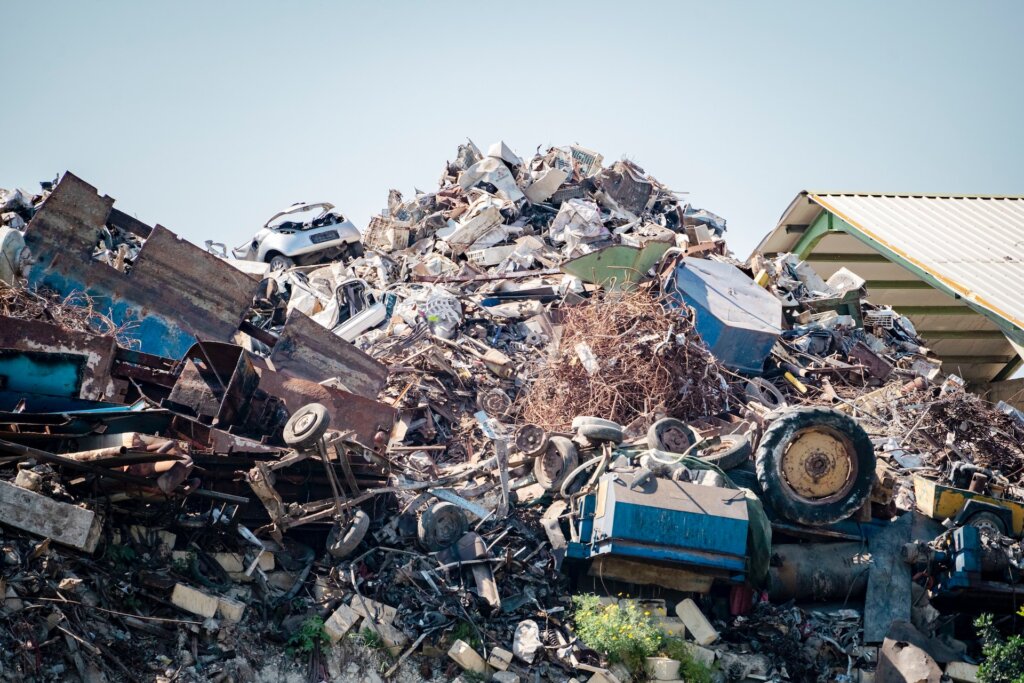For Zero Waste Victoria,
For Zero Waste Victoria, EJA lawyers challenged plans for a waste-to-energy plant in Laverton, Victoria, because of concerns about pollution and the impact on community health.
Before the scheduled hearing for August 2020, a settlement was reached and closed the case, after the EPA and Recovered Energy Australia agreed to comply with strict new conditions.
This was a big win for the large and growing number of people in the local community who are concerned about the health and environmental impacts of Recovered Energy Australia’s proposed waste-to-energy facility in Laverton.

Why was this case important?
Even though burning rubbish in backyard incinerators was banned about 40 years ago, a number of companies in Australia have moved to restart the practice by burning waste in industrial incinerators for energy.
These waste-to-energy projects might sound good at face value but, contrary to company claims, waste incineration is not good for the environment or community health. Combustion of toxic materials such as plastic and PVC releases toxic pollutants into the air, including mercury, lead and dioxins that can cause serious health impacts.
Facility operators often reassure communities that pollution level standards will be adhered to. In reality, air pollution standards in Australia are lax compared to many other countries and are often poorly monitored and regulated.
Our governments must stop accepting ‘solutions’ that relocate pollution sources and exacerbate environmental harm and instead prioritise waste recovery projects that aim for zero waste and energy projects that are genuinely clean and renewable.
Where these projects do go ahead, it must not be at the expense of the local community and environment. We must make sure that there are legally enforceable conditions in place to limit pollution, protect community health, provide transparency and ensure that waste is not diverted away from recycling and reuse.

This was a big win for the large and growing number of people in the local community who are concerned about the health and environmental impacts of Recovered Energy Australia’s proposed waste-to-energy facility in Laverton.
The legal intervention
In January 2019, Recovered Energy Australia’s proposal for a waste-to-energy plant in Laverton, Victoria was approved by the Victorian EPA. The EPA’s approval came despite limited conditions in place to monitor and control pollution or ensure that waste that could be recycled was not burnt at the plant. The project was subject to much community opposition.
In February 2020 Zero Waste Victoria, instructed us to launch a case with the Victorian Civil and Administrative Tribunal (VCAT) to ensure that if this waste-to-energy facility went ahead, it was under strict conditions and not at the expense of community and environmental health.
Before the scheduled hearing for August 2020, a settlement was reached and closed the case, after the EPA and Recovered Energy Australia agreed to comply with strict new conditions.
The new conditions which Recovered Energy Australia will need to comply with include:
- Only accept waste which would otherwise be disposed of to landfill.
- Full transparency to the public on air pollution by publishing continuous emissions monitoring data in real time and periodic monitoring data on an approved project website – this is a Victorian first!
- Monitor an increased range of pollutants, including condensable particulate matter, also a Victorian first.
- Requirement for the project to meet the lower end of the European emission limits.
- Continuous emissions monitoring of volatile organic carbon.
- Ensuring the pollution control equipment can be upgraded if required to reduce emissions of toxic furans and dioxins to the maximum extent achievable.
- Ensuring that the facility is designed to be able to accommodate future material recovery including steel, e-waste, recyclables and other hazardous materials.
- Restricting the amount of waste products from the project that can be disposed of to landfill to 3% of feedstock by weight.
- A requirement for ‘waste arising’ contracts to be preferred, to avoid locking councils into contractual obligations to supply fixed amounts of waste and disincentivise recycling. (These are a new type of waste contract for councils in Victoria, which means that ratepayers don’t pay disposal fees for waste they don’t create. This ensures that waste that ought to be recycled, can be recycled.)
Air pollution standards are lax in Australia compared with other countries. This case shows the importance of community groups taking action to strengthen inadequate conditions that threaten community health and the environment.
The Dandenong Waste to Energy facility was approved by the EPA on 20 July 2020. Most of the improved licence conditions realised by Zero Waste Victoria have also been imposed on the Dandenong facility.


